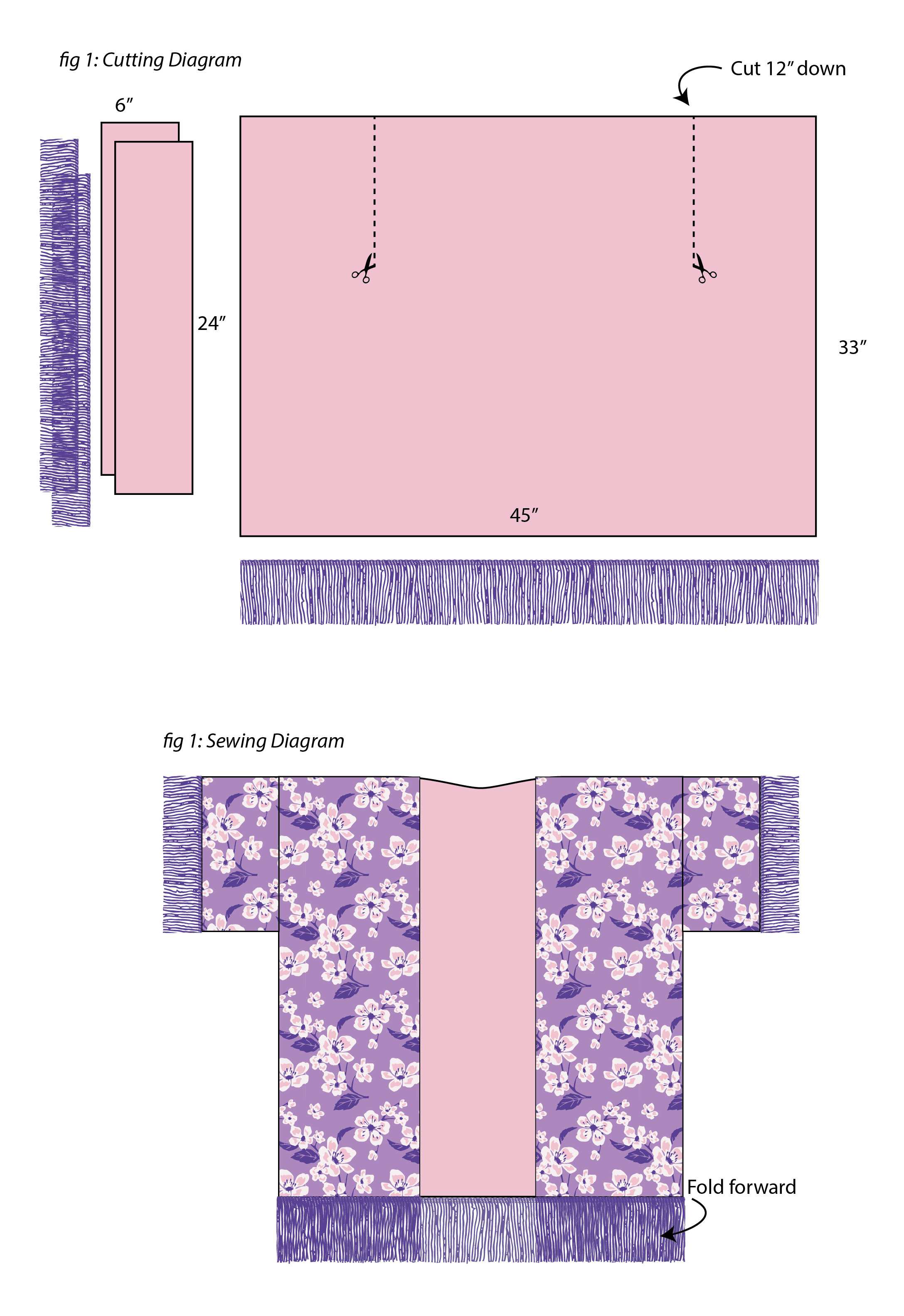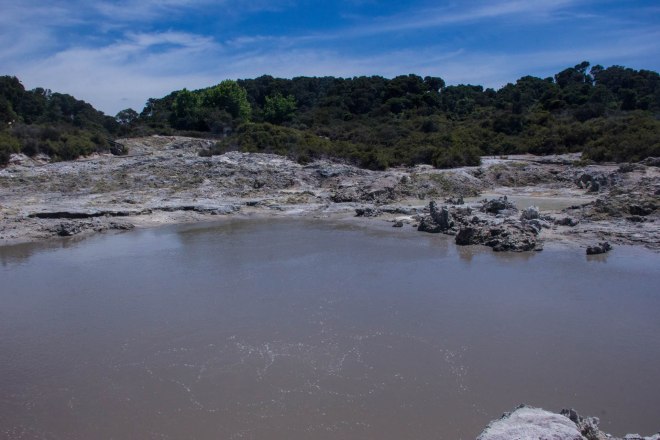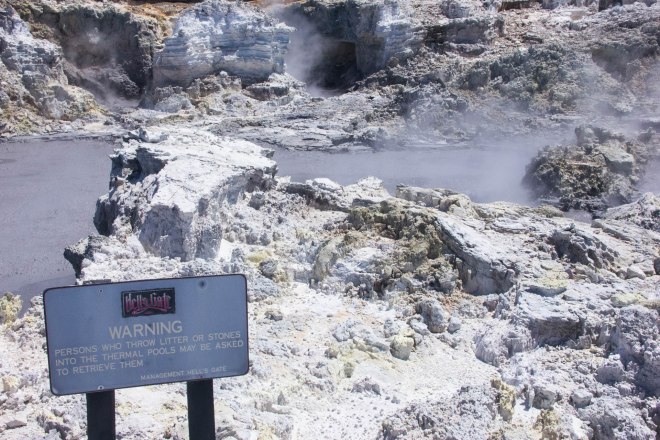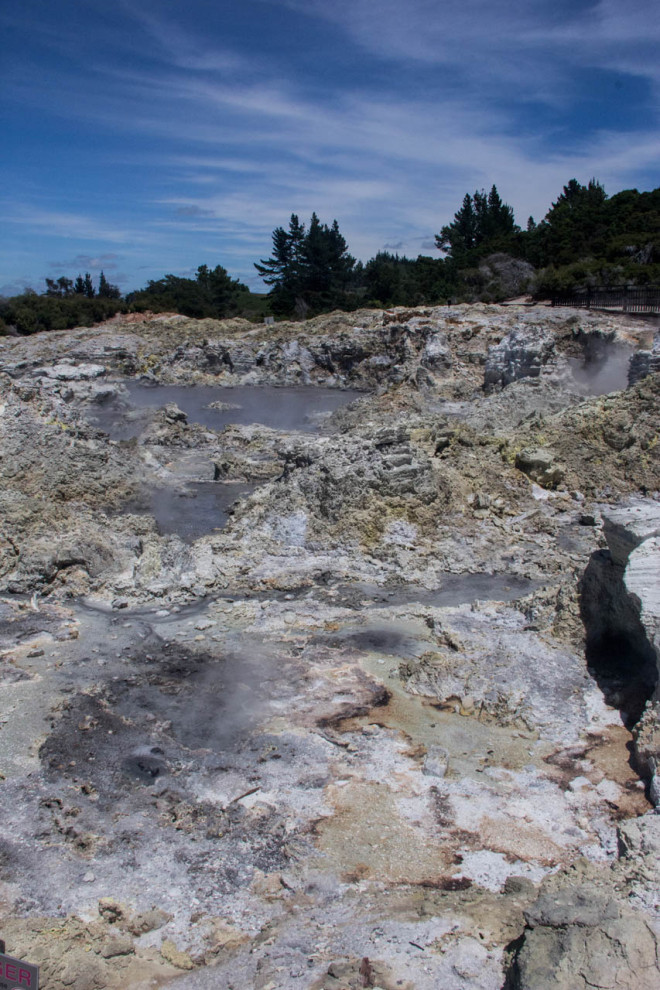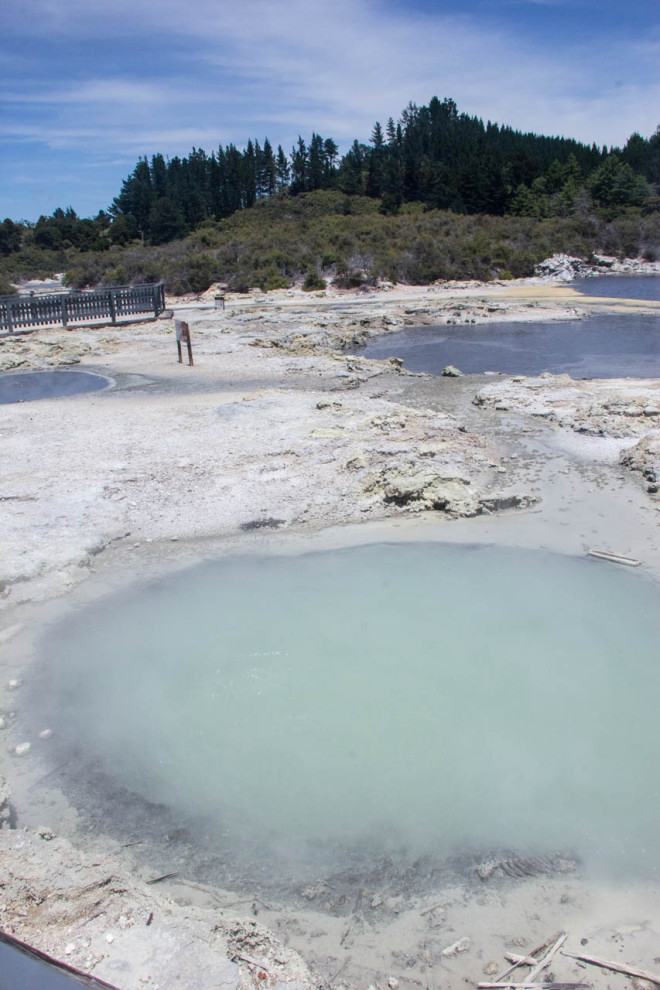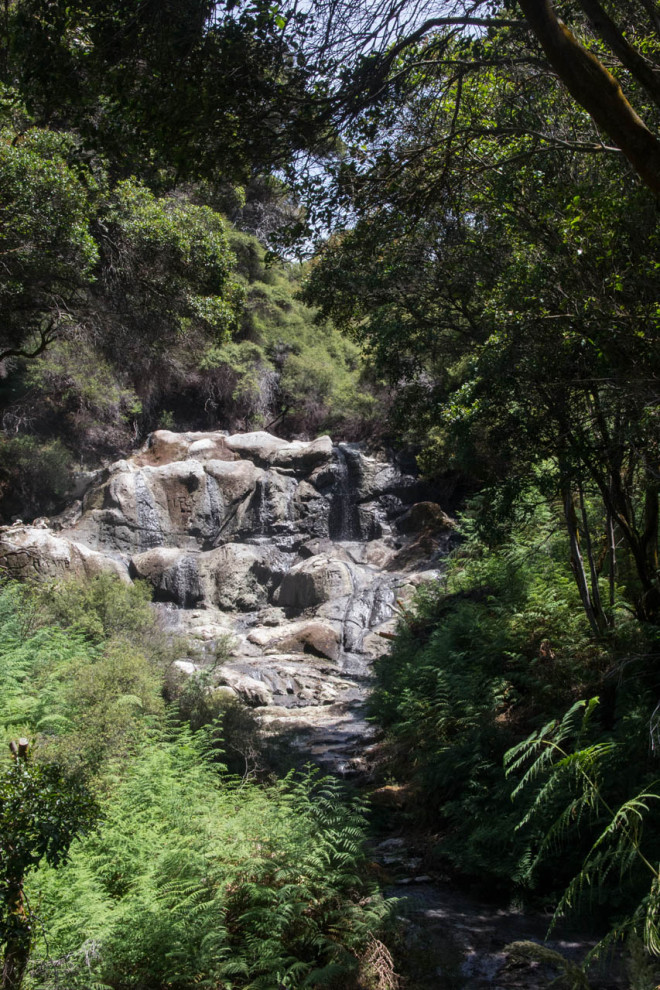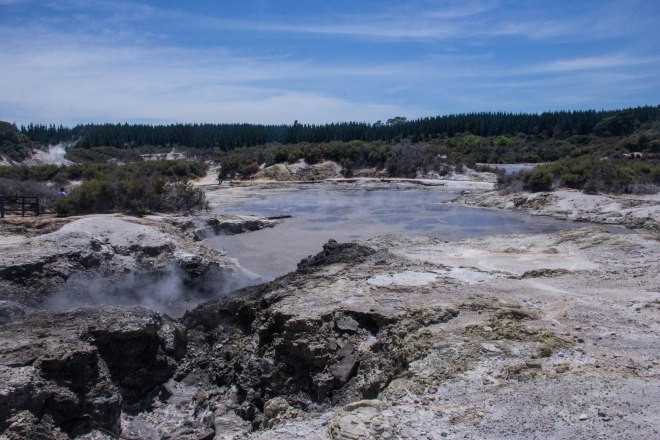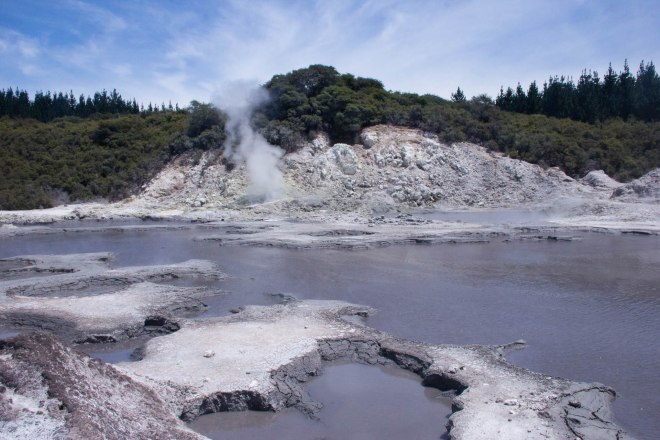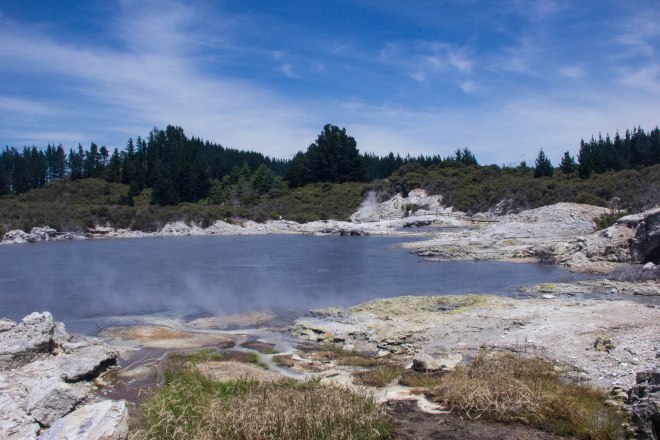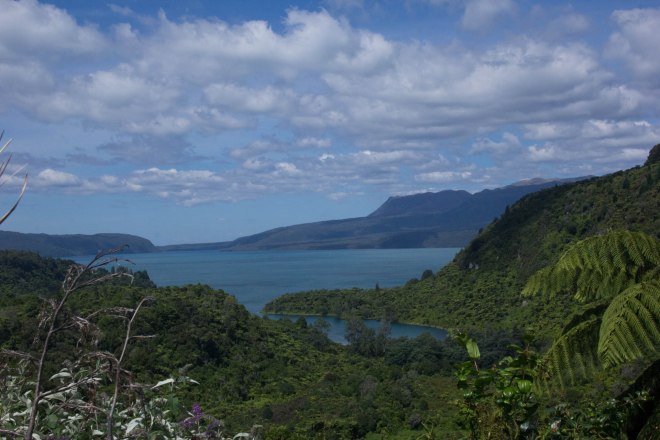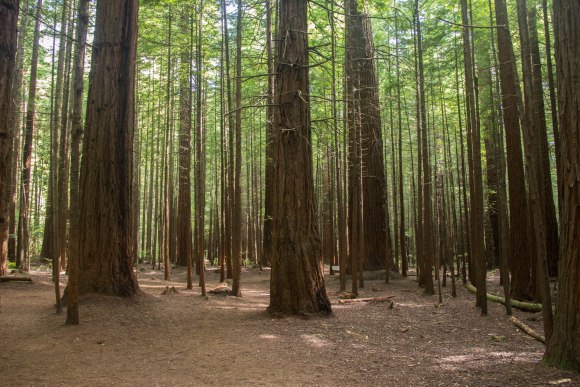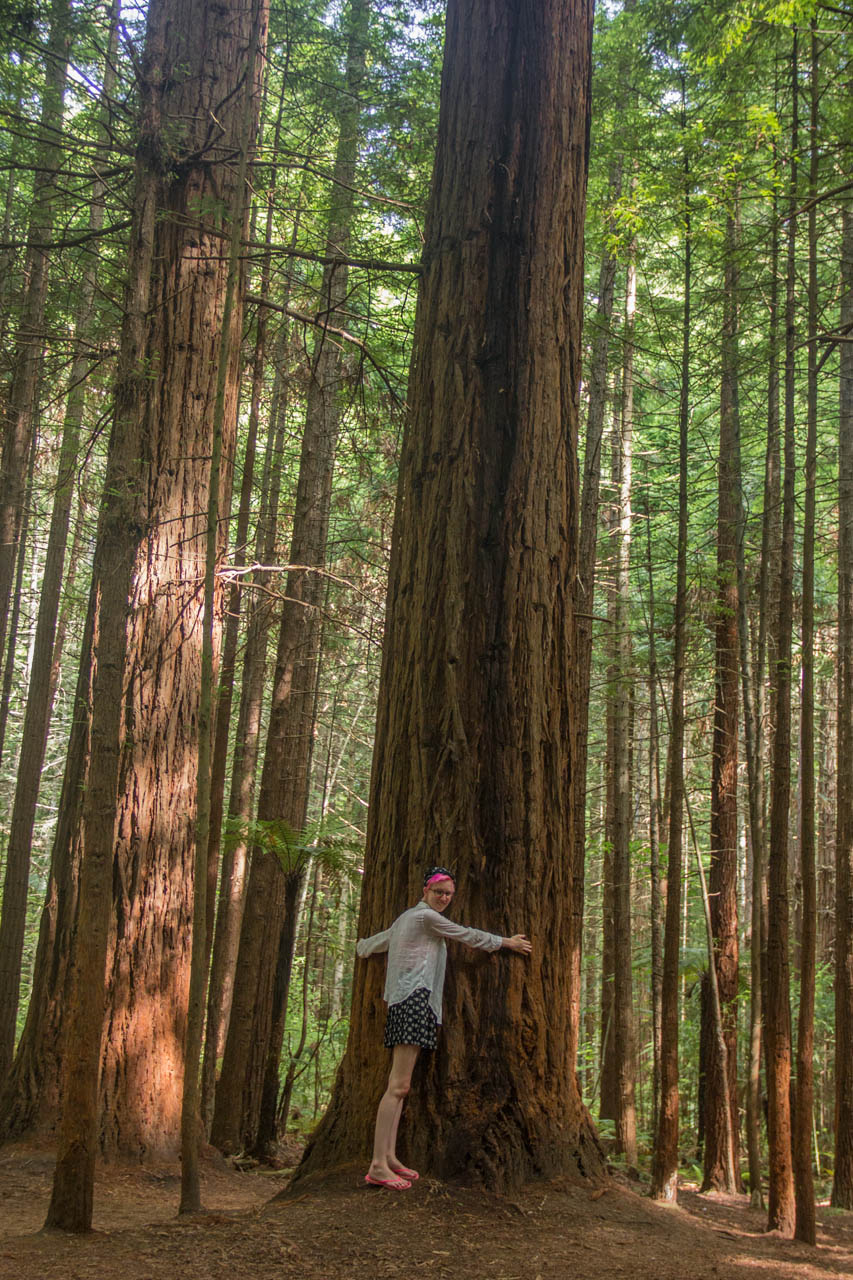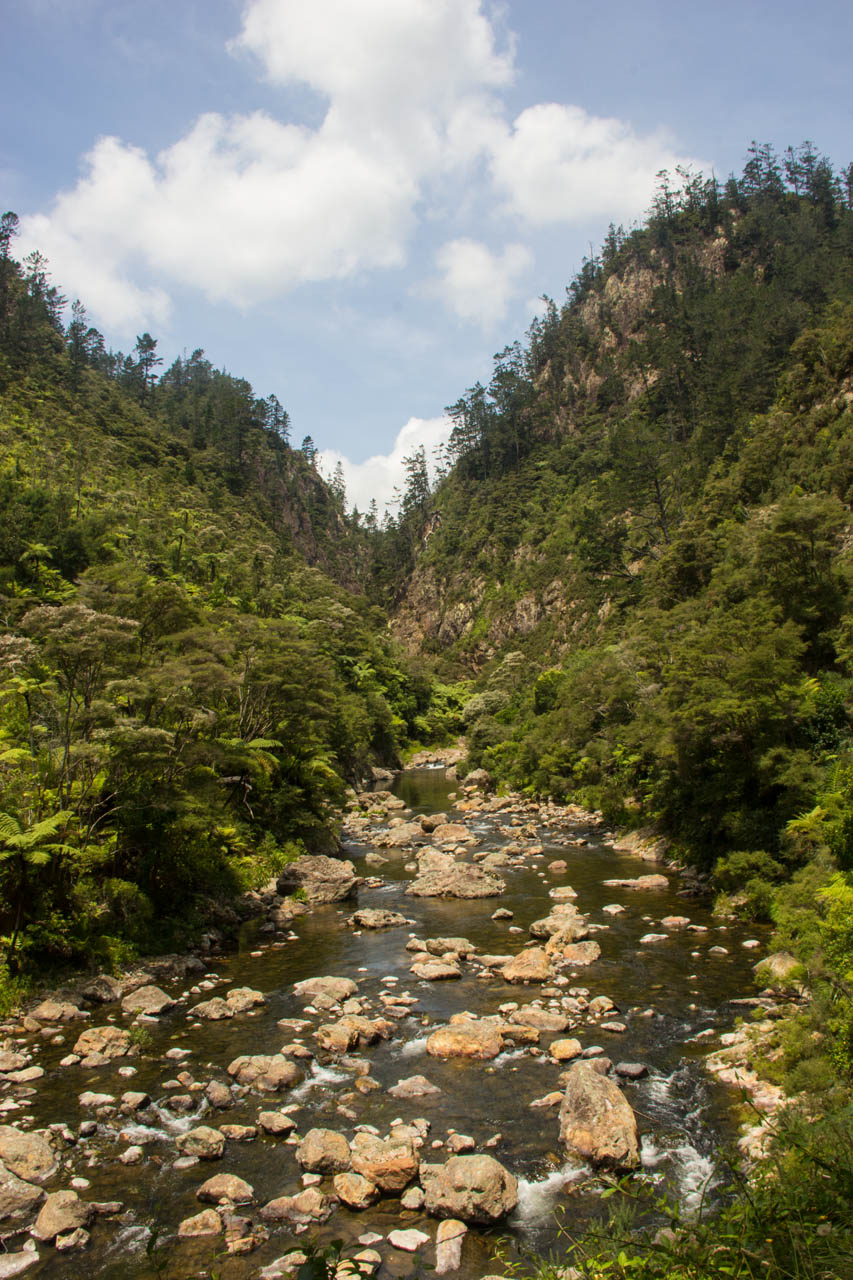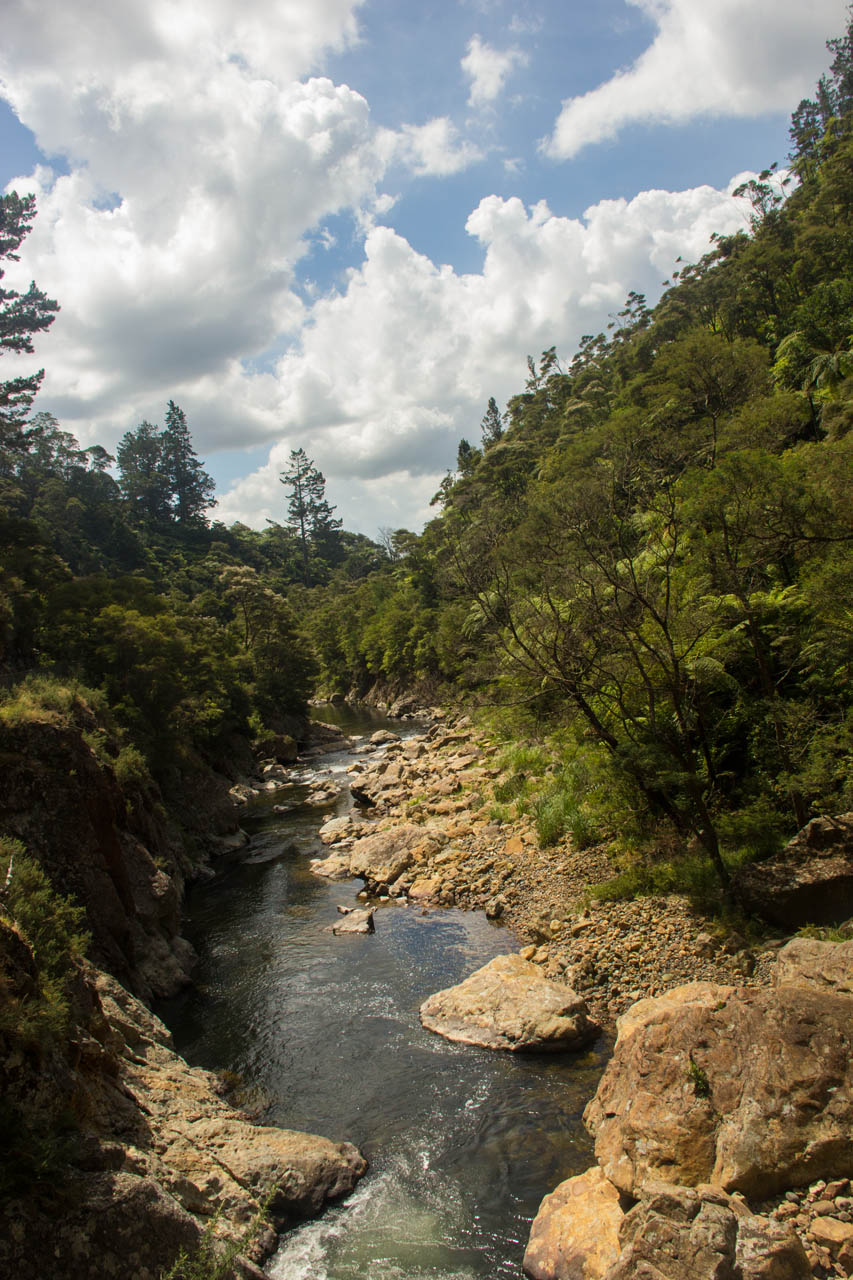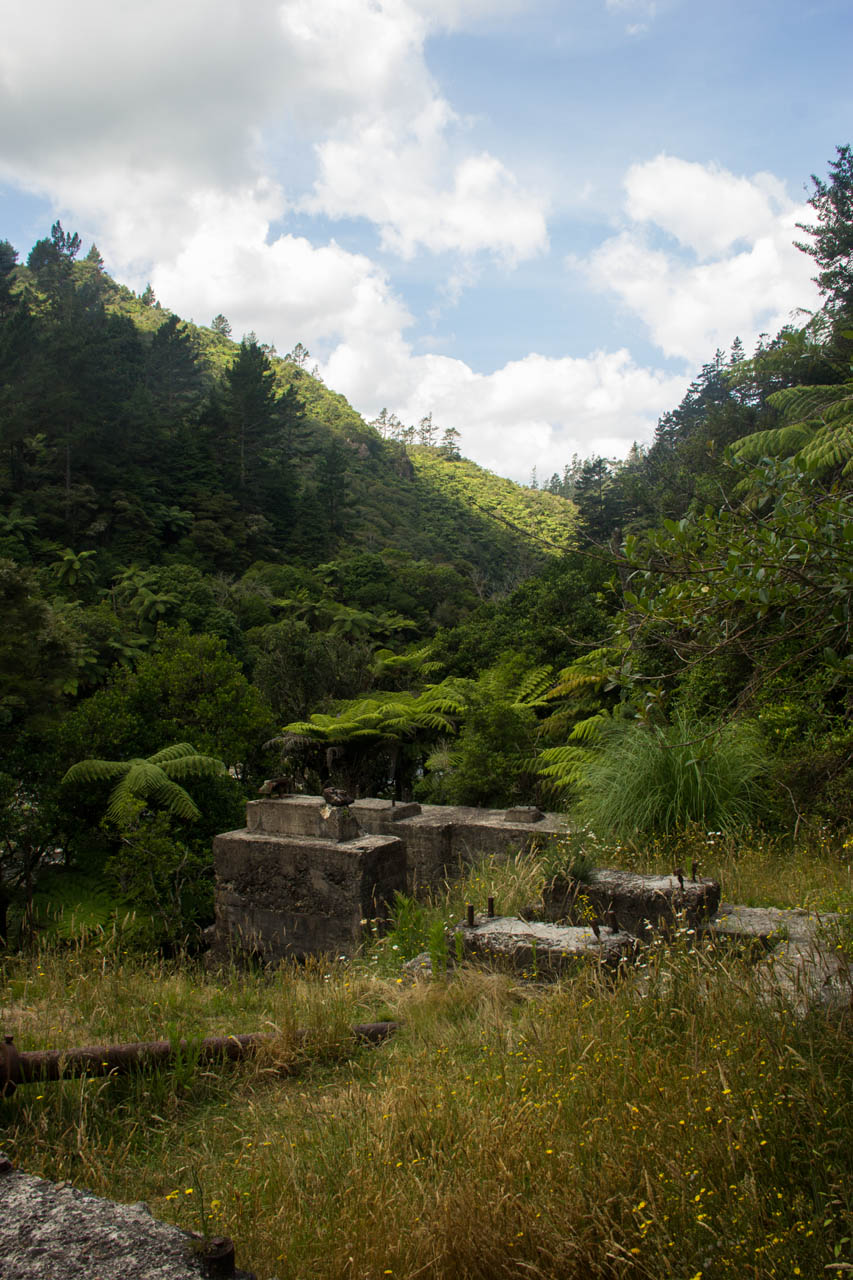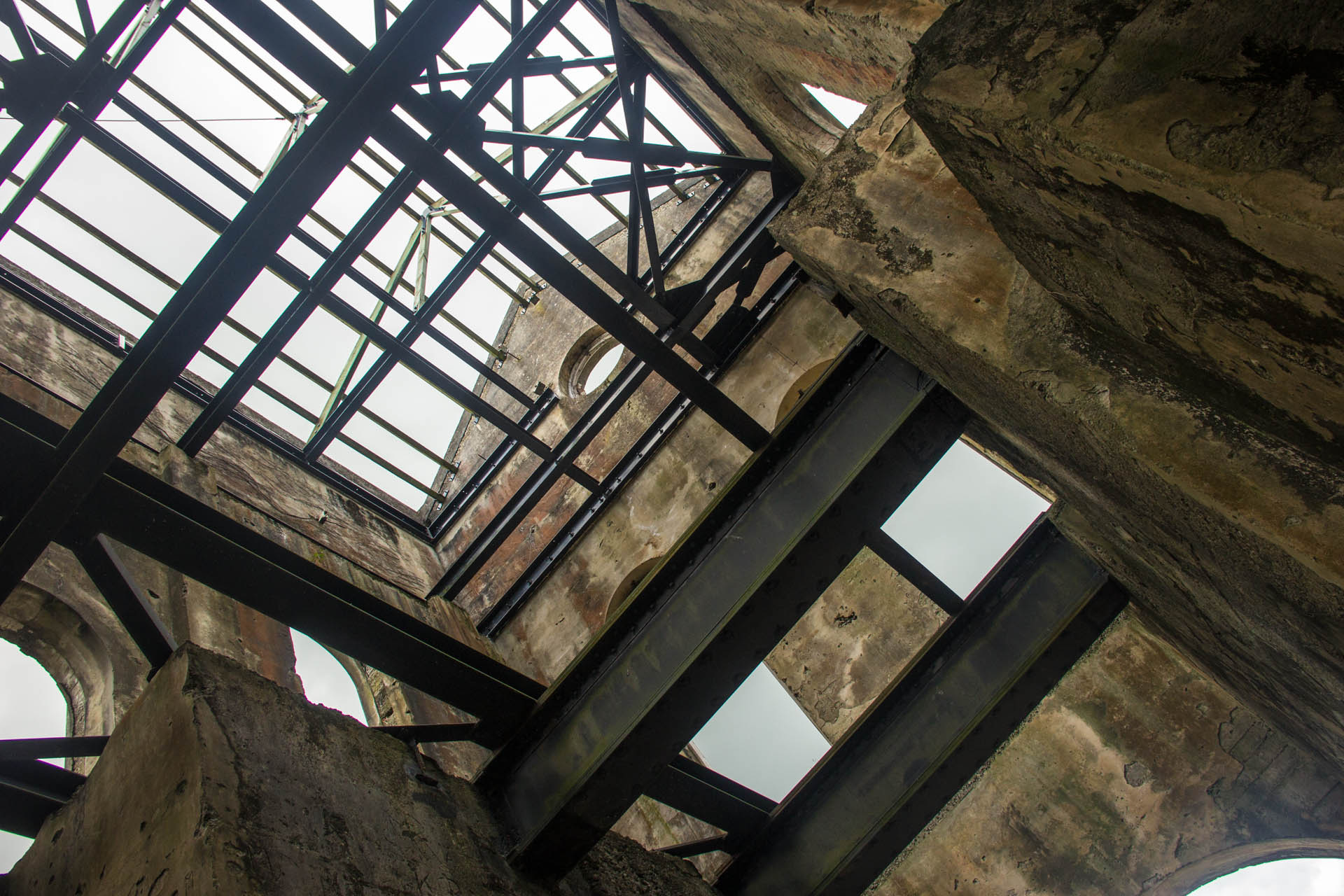In which a happy accident leaves our blogging sewist confused, yet delighted. Also in which there is a small explosion.
Read MoreOnce Upon a One Piece
In which another achievement is unlocked.
Read MoreA Vacation and a Swimsuit
Sewing a Swimsuit for Hawaii!
Read MoreOne Year Abroad
In Which our blogger reminisces on the past, and plans for the future.
Read MoreAn Island Adventure (and shirt to match)
In which the perfect hiking shirt is made, and an adventure is had.
Read MoreThe Traveller Dress
In which I take advantage of Kiwi resources (and sheep), make a dress, and go on an adventure.
Read MoreA Proposal - and a Rabid Goat.
In which our intrepid adventurers gets engaged, and has a unique encounter with the local wildlife.
Read MoreLand of the Sun, Home of the Sheep (and Occasional Possum)
We're going to take a short break from our regularly scheduled adventure-programming to talk about the things that happened during my 3 months in New Zealand when I wasn't busy climbing mountains and romping on beaches- I'll give you a hint... There was a lot of knitting. This little corner of the internet was originally created for the purpose of blogging about all the projects I get up to, and it seems that regardless of the mountains in my immediate vicinity, I still find myself needing to do something with my hands.
First things first. I met this pretty lady at Jon's parent's house: I did a little research and it turns out that Wheeler & Wilson, the manufacturer of this machine, was bought out by Singer in 1905, which means this machine was probably made in the late 1800s. It's not particularly rare, but it is a very lovely machine, and it's an interesting combination of things I'm used to on old machines. It has the modern upper threading path, which has changed very little since its original design, but the bobbin mechanism is a different story. The first successful sewing machine was designed in 1830, and this machine used a shuttle bobbin- a long, narrow piece which slips into as bullet-shaped device. The whole mechanism moves in a curved forwards-backwards motion under the machine when it's sewing. My treadle machine at home has a shuttle bobbin.
The shuttle bobbin was eventually replaced with a stationary bobbin, which continues to be the standard for modern machines because it's less prone to jamming, mechanical issues, and being generally finicky. This machine was obviously made during the transition period, because it has a modern style bobbin and casing, but the mechanism still moves under the machine like a shuttle. Very weird, but very cool and clever. She hadn't been used for a good couple of decades, but she was in great condition regardless. All she needed was a bit of cleaning and oiling, and a new belt. (ebay for 3 dollars, if you're curious.) The most difficult part was coming up with a project for her once she was ready. That didn't turn out to be so hard either, though- It's unreasonably sunny in New Zealand (40% more intense UV rays than the US), so I chose to make a super simple shoulder-covering Sun Protection Device- complete with fringe!
I used about 2 yards of printed rayon fabric, and a couple of yards of satin fringe in two different lengths. I think it's supposed to be upholstery fringe for pillows and stuff, but it matched my fabric too perfectly to pass up. If you're curious, and because nobody in the world deserves sunburnt shoulders- I've made a diagram:
This way I don't have to write the whole thing out, you see. It's very simple. You attach the sleeves to the cut slits, and then sew the tops of the sleeves and the shoulder seam all in one go. The only not-pictured step is the binding to finish the front and neck- that's just a 4" wide strip that runs up one front, around the neck, (which I trimmed into a slight curve) and down the other side. The shoulders and armholes are french seamed to add stability and hide raw edges, and the fringe is also encased by the fabric, so nothing unsavory is showing anywhere.
See? Easy as pie. And these things sell at markets and such for something like 60 dollars. Really, you could use whatever kind of fabric you wanted- I've even seen some with lace. This one happens to match my swimsuit though- and my hair, apparently- which is always a nice touch.
Including the fixing up of the sewing machine, that project was completed in the span of two afternoons. These next two basically occupied the rest of my down-time between adventures, given one took significantly longer than the other.
This pattern is Sparrow Song by Anne Hanson, made with some Possum-Merino yarn I got in New Zealand. Possum is a pretty uniquely New Zealand thing, and it's very very soft, and very warm- even if the concept is a little weird. Possums in New Zealand are a totally different thing than US possums, though. As for the yarn, it's a bit hairy and sheds at first, but only a little. Still totally worth it. In other news, I really love this cowl pattern. It's knit top down, and then the bottom edging is a knitted-on border completed last. It's a bit ridiculously warm.
In a problematic and cruel twist of fate, however, I have only been able to wear it about twice because it is very warm and, because New Zealand's seasons are opposite from ours, I've essentially had two summers in a row with about 3 weeks of winter in between. By the time my next trip is completed, I will have had four consecutive summers without a full winter in between. I probably won't get much use out of this cowl in that span of time, but I'm certainly going to try.
Here's the next (and significantly larger) project:
Leaves of Grass by Jared Flood. The pertinent information for both of these projects can be found in more detail on my Ravelry page, if you're interested in making them. This is a circular shawl knit from the center out, and has yet another knitted on border. I think knitted on borders are my favorite technique in knitting. The only other thing that comes close is gusset heels...
The other particularly exciting thing about this shawl is that it's an Elizabeth Zimmerman Pi Shawl. There are only four increase rows in the whole project- in between each lace pattern. This allows you to substitute in any other lace stitch if you're not feeling whatever's written in the pattern, since you aren't limited by needing to match increases. I didn't make any changes to this one- maybe next time.
I cast on for this shawl a day or two before I left for New Zealand, and I finished it in the Los Angeles International airport on my way back home. Not that I was working on it constantly, but it took basically the whole three months. It was actually pretty great travel knitting. The only awkward part was when I dropped my ball of yarn behind my seat on the return flight, and had to employ the gentleman sitting behind me to retrieve it. He was a good sport, though.
The last part of this crafty little side note is more of an in-progress sneak peek, because it's getting a blog post all to itself later on. One of my favorite things to do on warm summer evenings (in December, I'm actually still not over that weirdness)- was hunting for sea glass on the beach. We'd drive to the beach after dinner, stop for ice cream, and walk along the beach looking for pieces of sea glass.
This is a photo of what we gathered after the first ice-cream laden evening. I wanted to make myself a necklace, but ended up finding enough pieces on the trip that I decided to share the love a little bit more than originally intended. We found so many pieces that I had to leave most of them behind, but the others- well, you can find some of them here if you're curious, but the details will come later.
You've probably noticed that not everything in the picture is sea glass- there are also ceramic shards, although they're a much rarer occurrence. According to the all-knowing interwebs, they're called 'beach pottery'- and I will let you know as soon as I figure out what I'm going to do with them.
I'm a material person. I like stuff, I like projects, and I am the kind of person who needs to have something to do with my hands, pretty much all the time. I may have been in New Zealand to see the sights and climb the mountains, but I had just as much fun with my projects and I'm especially happy knowing that I can still get my materials and work on things there, since I'll be going back for a whole year in a few months. In the meantime, I'm going to continue to wear my knitting around even though summer's almost here...
(next time, mountain-adventures. I promise)
In Which Hell Bubbles its Greetings, and the Trees Say Hello.
Hi again! I've got lots of excitement coming up, and I want to make sure I tell all of you about it, so I'm holding myself accountable to you guys: If I don't post twice this week, you have permission to bop me on the nose. That is all. New Zealand turned out to be beautiful in a lot of different ways- and this little adventure proved to be beautiful in the sort-of-scary, definitely-stay-on-the-path sort of way.
Meet Hell's Gate:
The first thing most people notice when they drive into Rotorua is the smell of sulfur. I have some interesting scent-related handicaps, so I could tell that the air was a little different, but I didn't think it smelled too bad. I was, however, very thoroughly educated on just how bad it smelled to all the other humans.
Hell's Gate (it's non-touristy Māori name is Tikitere), was so-named when George Bernard Shaw visited the area in 1934 and declared that, if his colleagues though he was going to hell for his atheism, these would be the gates of said hell.
The science is even cooler, though. We all learned about plate tectonics in middle school, and most islands (especially in the pacific) are volcanic either in their recent past, or in some cases (ahem- this one)- in their present. Tikitere's existence is present-day evidence of ancient volcanic activity, and it is so cool. 10,000 years ago, an eruption caused the water from this ancient lake to drain- forming two other lakes in the area. The absence of water pressure on this now-dried up lake bed caused faults in the ground below, and steam and gases are still slowly escaping 10,000 years later.
Tikitere has a long history of being used by the Māori as a sacred site, and sometimes for medicinal purposes. More presently, it's become a tourist attraction and a spa. You have to pay to get in, but it's worth it to get to see some of these things up close and personal, and to learn about its history. It takes a little over an hour to walk around all the paths (if you take your time and read the informational signage) and it's a great, flat walk but there's no shade so bring your sunblock and reapply frequently or you'll be as toasty-burnt as the bits and pieces of wayward organic matter scattered around the edges of the hot pools.
Apparently, the Māori took a pretty immediate shining to George Bernard Shaw (maybe something to do with his atheism vs. the Christianity and literal come to Jesus talks they were getting from pretty much everyone else at the time?)- so many of the pools and ominously bubbling cracks in the ground were named by him. These names are displayed alongside the Māori names, which makes for a truly unique mesh of Māori and European values and interests. The signage also displays the average temperature of each pool, and what sorts of gasses come out of it. One reaches temperatures of 252 °F, and another has a pH level of 1. One of the pools (don't scroll down yet, but it is down in the pictures) could even cook a pig in two hours.
Apparently, if you feel the need to cook yourself a pig, this is the place to do it:
Amidst low ropes and a very liberal dusting of "Danger, Don't Step Off The Path" ( if you value your feet) signage, the walkways wind through two areas separated by some very welcome shade and green space- and something pretty awesome sits nestled in the trees:
Fine Lords and Ladies of the Internets, I give you: The tallest hot waterfall in the southern hemisphere!
Okay, It's not that tall. or big, or whatever- but it is bathwater temperature as opposed to the usual frigid river temperatures, and that's pretty cool. The Māori tribe who lived here believed that the water in these falls had strengthening and healing powers, so their warriors bathed in the waterfall before going into battle. They weren't far off the truth- The falls are laced with minerals which, while they may not be able to heal a severed limb, have been proven to speed up healing and help with some skin problems. Kind of like the Roman Baths in England.
As we wandered around between the pools in the second, larger area, things started to heat up even more. Larger than the first, and with not one single solitary shady patch in sight, I began to wonder if we would melt like the mud in the bottoms of these pits. You see, the sun was heating us from above and the ground was heating us from below, and between those two things the usually temperate New Zealand summer became...well... Hell's Gate.
Such steam!
One of the most interesting parts of the whole walk was seeing this area, where a small, freshwater stream met the sulfuric hot pool in steady little puffs of steam. The cool freshwater has allowed for grassy growth, perhaps the only green within the otherwise desolate circle of land.
After our near-melting experience, and learning that our ticket price included getting to soak our feet in some of the mineral water from one of the more hospitable pools, we once again took to the road to continue the apparent volcanic theme of this trip- Meet Lake Tarawera:
Lake Tarawera didn't always look like this. In the early 1800s, this area was home to the Pink and White Terraces- hot bathing pools formed with silica deposits from volcanic activity in the area. Eventually, Mount Tarawera erupted (you see that flat-looking mountain a little to the right of the middle? Yeah. That's Mount Tarawera, and it wasn't always flat...) and the Pink and White Terraces were buried in the fallout. The scarred landscape turned from pink and white to green, and now it's a beautiful, quiet place for some freshwater swimming (The first time I'd experienced that in New Zealand, actually).
On the way back from our volcanic sightseeing, we stopped off to say hello to some very old, very tall trees.
Whakarewarewa Forest is just outside Rotorua, and it's a staggeringly large forest full of staggeringly tall trees. The redwoods aren't the only species around, but they're plentiful nonetheless. We didn't spend too much time in the forest- it's a place I really enjoyed and would like to see more of, but it had been a long, hot day- and I think everyone involved was ready for naptime. Not before I hugged some trees, though...
What an adventure! I love the ones that have a little bit of history involved, and volcanoes are a pretty huge part of New Zealand's history- It wasn't the last we saw of them, either.
Alright, like I said. I'm posting twice this week. To avoid nose-bopping, you see. I assume you're curious about what sorts of crafty, projecty things I got up to while I was between adventures, so I'll tell you all about that, and then we'll be off on a three-part (probably? I might need four...) series of mountain climbing escapades! That's right- I climbed multiple mountains. There's even photographic evidence that this thing happened.
In Which the History of Gold is Deceptively Rusty (but still pretty awesome)
The next New Zealand weekend adventure found us driving down winding mountain roads on a day that seemed unbearably hot in the sun, yet just the right side of chilly in the shade. It seemed the former wasn't much of an issue, because the place we were going had plenty of trees- not to mention some other pretty wonderful things:
Welcome to Karangahake Gorge! Aside from its position as a truly spectacular piece of nature, this area is filled with the rich and ongoing history of its own: Gold. I'm used to elementary school stories of men heading west to California to pan for gold in the rivers, but this venture was a little bit more subterranean. You're looking at a turn of the century gold mine, and although mining here was suspended decades ago, there is still as they say, gold in them there hills.
Karangahake Gorge is now a reserve space with some truly fabulous walking trails that I will get to in a minute, but also some pretty great informational signage about it's history. I may or may not be a huge nerd about informational signage- it's just nice to see a thing, and then learn about the significance of that thing, is all. Example: this is the view looking over the main battery. Excavated dirt (with the gold ore mixed in) was brought to this building using water from the river, where it was pulverized ("battery" like "battering ram" not the kind you stick in flashlights. This was before widespread electricity was a thing) -so the gold could be extracted. At one time, this area was responsible for more than 60% of the gold production in New Zealand.
There are a few trail options around Karangahake Gorge, but I was informed that the underground pump house and windows walk were going to be our best options. The walking path here follows what was previously train tracks: used to carry gold ore out of the mountains. It's carved into solid rock at the edge of the gorge with a very solid railing to protect curious types from the 50- to 75- foot drop into shallow, rocky water below. In some areas, the tracks have themselves experienced that fall. The twisted, mangled remains of steel and the occasional rail road tie or pipe have settled in the water below, and a new trail has been carved deeper into the gorge next to the washed out area.
Although it's a reserve, and meant for exploration- some areas of the mine are still dangerous and closed off to the public.
Gotta keep those hobbits from sneaking through the mine shafts, you know. Pesky Bagginses and their shortcuts and invisible gold rings. I wonder if there's invisible gold in these mountains!?
But what's this ahead? Could it be? My first ever real live swing bridge?!
We paused for a photo-op, of course, because- let me 'splain you a thing'-when you've spent the majority of your life (and all of your independent adventuring life) smack in the middle of the Midwestern United States- there are no swing bridges. This is because in the Midwestern United States there are no hills to connect with bridges. Everything is flat. Flat and ocean-less and full of farms with corn and cows. Swing bridges and oceans were two things I wasn't really sure I needed until I had experienced them, and let me tell you, swing bridges are pretty awesome.
Say Cheese!
The swing bridge took us up a path to a sign that said the underground pump house walk was currently closed- disappointing, because that just sounds pretty awesome. We hypothesized that there were structural issues and hoped they were temporary. Karangahake Gorge is a day-trip's drive from Auckland, and I intend to go back to see if it's open. We did, however, get to experience the famous 'Windows Walk'.
After a great many stairs (so many stairs...) we follow a dark tunnel cut into the side of the mountain. From the main tunnel, several auxiliary tunnels are carved both right- further into the mountain, and left- out to the steep cliff and overlooking the river. These left tunnels end in 'windows' which we use for light as we wander through, and which the miners used to deposit whatever they dug out of the mountain into waiting train cars below. From one of the windows, we looked down and saw the swing bridge we crossed to get to this point:
About halfway up the left side of this photo is a little dark spot- that's the entrance to the Windows Walk- at the top of the stairs. Unfortunately, this area was also plagued with some structural issues. Only half of the walk was open, after which a barricade forced us to turn around and head back. Usually, the carved tunnel goes all the way back to the beginning and deposits you in the parking lot where you started, but hey- another reason to go back, right? We took a little detour to follow that train track from before in a new direction- here you can see the old path falling away and the new path next to it.
Some of you may recall that I did a semester-long black and white film photography study on the process by which nature constantly attempts (and succeeds) to break down and take back the byproducts of human intervention. This place was ripe with exactly that- old, rusty bits of machinery abandoned by anxious entrepreneurs on to the Next Big Idea, the worn train tracks and water pipes still in place amongst new growth of trees and shrubberies. As soon as we humans turn our back on something, nature begins the slow reclamation process.
There are some opportunities to climb around on the old machinery- or if you're a huge nerd like me, to take pictures of it. It seems in every capacity like the miners rushed out as quickly as they rushed in- leaving the slowly rusting detritus of their trade wherever it happened to land.
I wonder if the miners appreciated the views they had in these mountains while they were prospecting. Probably not, deep in the belly of the mountains, but maybe when they came up for air. This place is nestled amidst mountains and is a beautiful thing all it's own. Maybe it was less so when the miners were uprooting it for minerals but nature has had the better part of a century to take it back now, and she's done an admirable job softening its hard edges.
After that healthy dose of green, and the positivity that is nature reclaiming land after the mines were abandoned- we drove a little further to an actual, real-live present day mining town with an active pit mine.
Things happen a bit differently these days, with open pit mines instead of tunnels and shafts. There is a building down there, a house-sized office of some sort- and heavy machinery for the digging of the gold, but everything is miniscule in comparison to the size of this hole in the ground. There were guards patrolling the top of the mine (five, by my count)- probably to keep hooligans and activists from causing problems. I wonder if they get that a lot. The Kaimai ranges (Where the Karangahake Gorge Mine was located) are still filled with gold, but the protected land status means it can't be mined. Currently. This area wasn't so lucky, but given enough time after it's abandoned in search of more lucrative ventures- I have confidence that nature will take back this pit and make it once again beautiful. With our back to the pit mine buzzing with activity, we were met with a very interesting site: at the end of a pair of tracks was a suspiciously old looking building with a suspiciously new looking foundation.
The Cornish Pump House was a relic of bygone days when water was used to power the mines. It fell out of use when it was replaced with electricity, but was preserved because of its historic significance. The informational signage here was a little sparse, but between that and the internet we figured out the basic story: In 2006, surveyors realized that the ground the old pump house stood on was unstable because of the mining operations right next door, and a very large effort was made to relocate it. The tracks are teflon-coated concrete pads which the pump house was slid along on for 300 meters to its new resting place as you see it today. Visitors can wander around inside and see how the operation worked (and which spots are now the best places for bird's nests as they flit about above...) and if you're a huge nerd like me, take pictures of the architecture.
It's sort of nice to see the old parts standing watch over the new things, as if to say that everything will settle back into its rightful place eventually. I love adventures like this- and it's not often you get to see the progression of history right up through present day- even if the present day part isn't exactly all warm and fuzzy. Who knows what these places will look like in a century- they've certainly changed a lot in the previous century. It might just be that I have a soft spot for historic places, and you know how exciting the Piha adventure was- how am I supposed to pick a favorite, though? Was Piha better than Karangahake Gorge? I'm refusing to answer that question. On principal.






